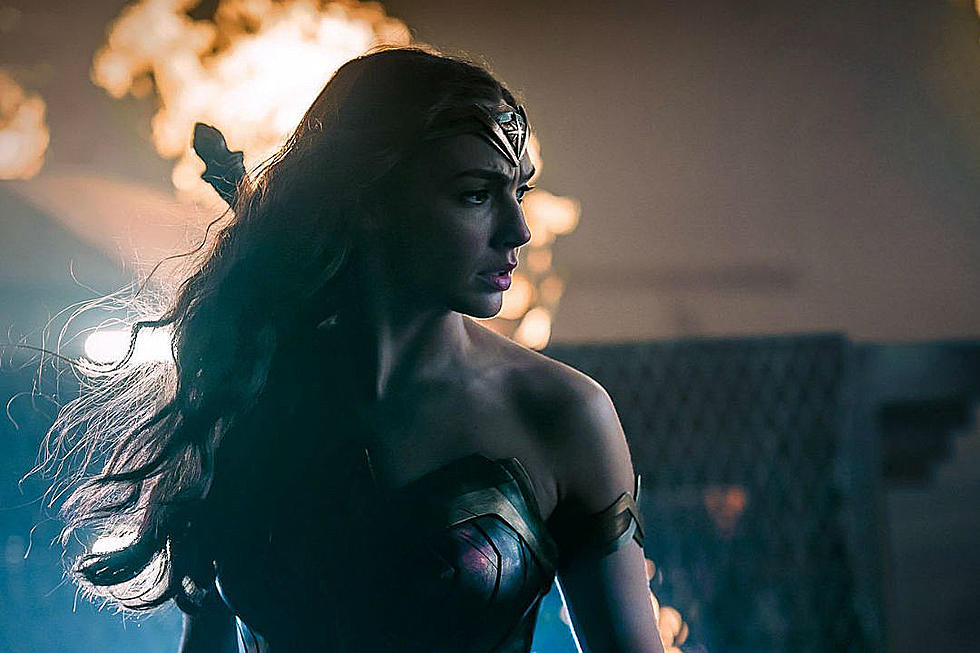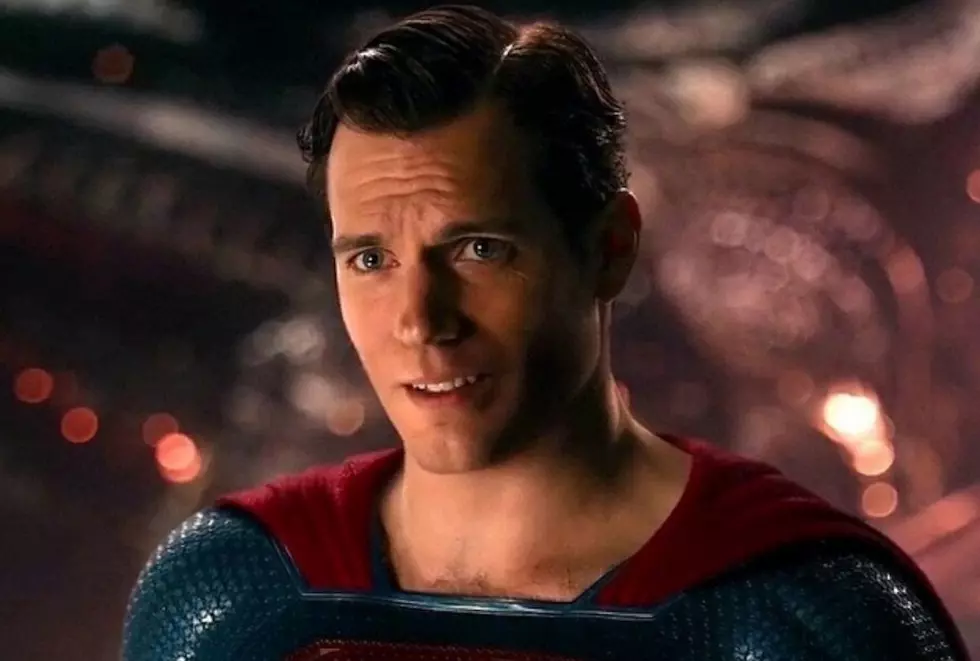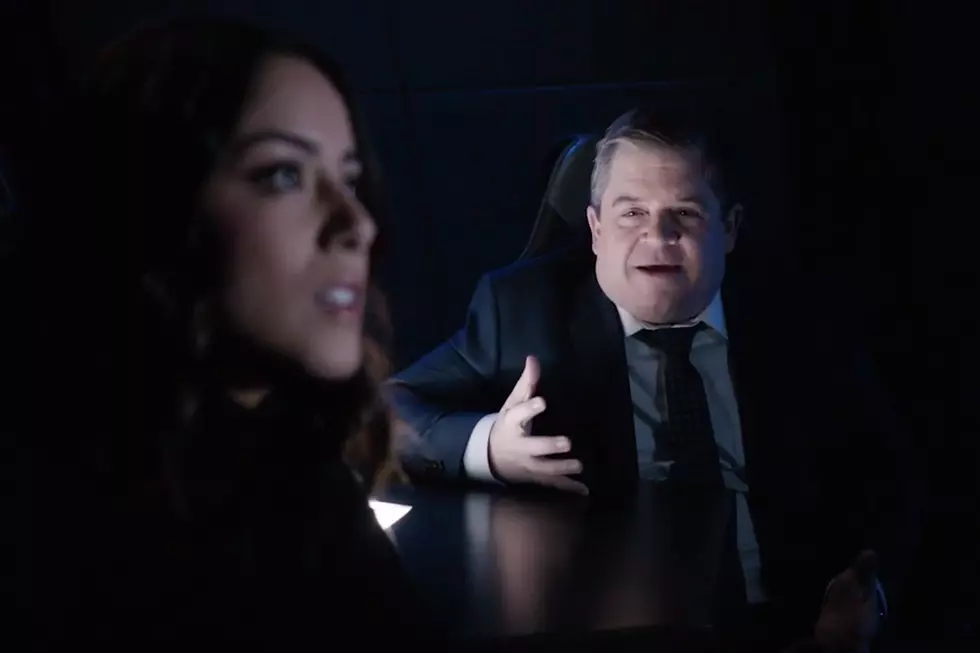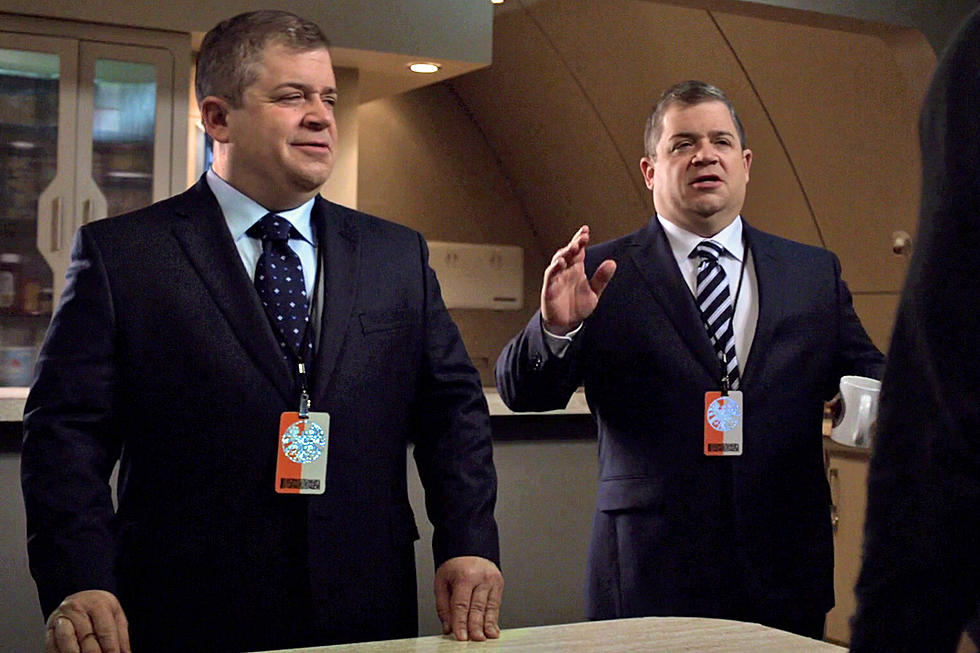![Patric Reynolds on the Wash One-Shot ‘Serenity: Float Out’ [Exclusive]](http://townsquare.media/site/622/files/2010/03/reynoldsserenity.jpg?w=980&q=75)
Patric Reynolds on the Wash One-Shot ‘Serenity: Float Out’ [Exclusive]
Despite having one of the shortest runs of any television series on Joss Whedon's resume, the sci-fi western "Firefly" and its cinematic sequel "Serenity," remain one of the creator's most celebrated works. While the "Firefly/Serenity" world is more or less in indefinite suspended animation for TV or Film, creators continue to expand the universe through comics, which is where the upcoming "Serenity: Float Out" one-shot comes in.
Written by Patton Oswalt (Yeah, that Patton Oswalt) with art by Patric Reynolds and a cover by "Buffy" regular Jo Chen, the series is something of a memorandum for Hoban "Wash" Washburne (played by Alan Tudyk), and follows his as-yet-unnamed group of friends as they christen a new ship to set out on a new adventure.
To get a feel for the visual side of the Wash-centric one-shot, we hit up Reynolds, who shared the pressures and triumphs of working on the fan favorite franchise.

ComicsAlliance: You've been building a pretty wide portfolio at Dark Horse of late with stories set in a variety of universes. Can you tell us a little about how you got involved in "Serenity: Float Out?"
Patric Reynolds: Well, after I finished "Abe Sapien" in September, I needed to keep working. I asked Scott Allie at Dark Horse (who's been my editor for every project so far) if he had anything available. He straight up told me that he had a "Serenity" one-shot script in his hands, but he wasn't sure if he could see me doing it. My style is so organic and bouncy, and he wasn't sure if that would jive well with the sci-fi genre, particularly with a universe where there are lots of specific spaceships, characters, environments, and very loyal and sensitive fan base. Scott told me to watch the "Serenity" movie, and do a sample "audition" page to see if I could handle it. i did some concept drawings of Wash (the character the one-shot is based on), to show that I could handle creating a believable likeness of him. I also did some sketches of the Serenity ship itself, which called for more perspective and technical mastery that I was used to. The audition page took me literally 24 hours to pencil and ink. When I was finished, Scott said "Great, I'll show this to Joss and see what he thinks." I said "wait.... Joss... Whedon?!??!" Scott said, "yeah, its sort of up to him." I had no idea this was going directly to Joss Whedon himself. I was kind of glad he didn't tell me beforehand, Lord knows how much more nervous I would have been. I might have exploded. A few weeks later, Scott E-mailed me back and said that I was on for the one-shot. "The sweetest gig we've ever thrown your way so far," he said. He wasn't kidding.

CA: Were you pretty familiar with "Firefly/Serenity" before you got the gig? Do you feel any pressure stepping into a creative role within the series' canon?
PR: I had heard of the the movie and the TV series, but I had never seen them. So, that was the extent of my prior knowledge. Before I got started on the actual pages, I watched the movie first (I really dug it... it was the engaging, character-driven sci-fi flick that I think the Star Wars prequels SHOULD have been), and then the entire TV series on DVD. I also watched clips of Alan Tudyk in "Dollhouse," just to get familiar with his mannerisms and likeness. I had to do several concepts of several of the characters in the series, even though they may or may not have been in the one-shot.
I felt an INCREDIBLE amount of pressure. This not only had to be my best work, but it also had to more technically and aesthetically accurate than anything else I've ever had to do before. Yeah, I could do it my style, but it had to fit in with the rest of the Serenity universe. It had to add to it, but be a part of it at the same time. I really had to tighten up, and really nail the likenesses of the characters and the ships in particular. The Serenity fan base is so loyal and knowledgeable that I really had to get everything right, otherwise they'd eat me alive. I knew Scott and Joss were giving me a tremendous opportunity to be part of such a great franchise, and so I felt I owed them an excellent book.
CA: You've worked with some pretty notable talent in the past, but Patton Oswalt seems like an interesting writer to team with given his prolific career outside of comics. What's the working relationship been like so far? Any surprises?
PR: Wow, yes. I had no idea he was the writer until I had actually got the job. Scott just said something like, "yeah, Patton's writing it." I was said "wait... Patton OSWALT? Patton "Werewolves and Lollipops" Oswalt? Patton "Stella d'oro Breakfast Treats" Oswalt?" Yes, THAT guy. Patton was very supportive throughout the whole process. I would e-mail him the finished pages, and he'd always respond with something positive like "Wow, that Reaver ship is badass!" And he was every bit as funny as you'd think. I sent him the first batch of finished pages and said "Wow! These are great... but I think it would work better if they were the Blues Brothers were in background, maybe fighting the Herculoids." I thought he was serious for about 3 seconds before I realized "Oh wait... he's also a stand-up comedian."
Each time I sent out finished pages, I have to "cc" about seven people: Senior Managing Editor Scott Allie, Assistant editors Sierra Hahn and Freddye Lins, Brendan Wright at Dark Horse, Joss Whedon and his assistant Nicki Maron, and finally Patton himself. I remember after I sent them a batch of pages, Patton, Joss, and Scott all started cracking jokes with each other through e-mail (something about Patton wanting to look "pretty," I don't know how it came about) ...and I just sat back and watched the magic happen and laughed. Even though was a ton of pressure working on Serenity (and working with celebrities to boot), I have to say it was one of the most entertaining work experiences in my life. I definitely looked forward to Patton's responses each time I sent something along.

CA: There's a photo realistic element to your work that seems like it lends itself well to bringing actor likenesses to the printed page while retaining your own stylistic distinctions. How do you personally tackle the balance of capturing the "character" vs. "the actor" on a project like this?
PR: Thanks! and... good question. Well, I think there's a big difference between getting a likeness of the actor and the actor playing the character. I try to get a likeness of personality and not necessarily a physical likeness most of the time. More of an interpretation than anything else. But with "Float Out" I really had to get a believable physical likeness of the characters, so I had to be more accurate and careful than normal. I gathered a lot of reference for several of the characters (mostly Alan Tudyk, who the one-shot is based on) in various acting roles and poses. When looking at the reference of the actor, I take note of a few distinctive features that make them unique. With Alan,I think its definitely his eyes, the shape of his face, and his nose. Those features on him really stand out. So if I focus on those and subordinate the other details, I've got a good start on making a believable portrait. But, i can't just put Alan Tudyk in a Hawaiian shirt and say "Look! this is Wash." I have to observe carefully how Alan portrays Wash, because when actors play characters they have to transform themselves. They're projecting a different person. When I choose a shot of Wash to draw, I make sure its one that represents these qualities and one that exaggerates the personality of his features a little bit more than normal. It has to become a bit more canonical. Alan gives Wash this great expressive quality, particularly in his eyes (and hair, too), but those features are activated by a dry wit and a tempered sarcasm. Basically, I have to draw not only Alan Tudyk, but Alan Tudyk projecting Wash.
CA: What's your experience been like working within the framework of the "Firefly/Serenity" universe so far? What are the pros and cons of jumping into a world with quite a few elements already designed? Have you had any room to put any personal touches on the series in terms of world building or character design?
PR: One of the pros is that everything is already pretty well designed before I get to it. The downside is that I have to keep that design intact, which means keeping a lot of details in the front of my brain all the time. Another challenge is that most of the events in this universe take place in space. Now, up until I got "Float Out," I had been drawing things that were more or less grounded in reality. The characters were in a house, outside in a forest, underwater in a lake, etc. In Float Out, everything takes place in space. So, the spaceships are floating, zipping around each other... and this really REALLY tested my knowledge of perspective. Because there is no horizon, no ground, there are multiple vanishing points, false horizon lines, and anchor points everywhere. On top of all that, these ships all have unique designs that would be tough to render just in at a stationary angle. But, they have to be active- they almost have to become characters themselves. Twelve hour days spent inking were not uncommon. I will say that I know perspective a whole lot better know- we learn things by doing them, there is no other way. I could probably draw a Winnebago in 2-point perspective in under 30 seconds now. In space, too.
As far as personal touches go... yeah. I use photo reference a lot, but I try not to copy it too closely. I intentionally shoot reference of people, environments, etc. that's just a suggestion to what I envision, so I have to add personal touches to it to get the final image. Otherwise I'll want to copy the reference outright. For instance, I'll change a navy pea coat to an alliance uniform, turn a bank ATM/pneumatic tube relay into an airlock mechanism that will shoot a bottle of champagne into space. But for the most part, I rely on style to put my stamp on a story. I render things a more realistically to keep the reader emotionally engaged with the characters, but in a way that's not too realistic so that we know that we're still looking at a drawing. There's an energy, a hum to things that cannot be captured in photo reference. I try to temper realism with personality, whether it be with a person, spaceship, or a character's bedroom. No matter now many details or ideas I have to include or conform to I still get to show you how I see it, through my warped little lens. So in a sense, get to put a personal touch on every panel.
CA: In addition to illustrating comics, you're also a former high school art teacher and a recent graduate from the Savannah College of Art and Design. How important have these experiences been to your career as an artist? How do you think you've benefited from approaching art from these different points of view?
PR: Well, I graduated from SCAD last August, and was fortunate enough to be already getting pretty steady work from Dark Horse. I will say that teaching middle school and high school in Las Vegas definitely got my mind right. I thought I couldn't make it as an artist, so I went to teaching as "Plan B," but I never gave "Plan A" a shot. I kind of worked backwards. After about my third year in the classroom where I'd have anywhere from 35-50 students who didn't want to be there, who were mostly discipline cases, who'd make hollow-point bullets with my art supplies (no lie), I knew that I had to do something else. Twenty-eight year olds should not be so mentally, physically, and emotionally exhausted that they fall asleep on their couch at 7:00 pm watching reality TV every weeknight. But that's how it was for me. I had a house, a car, a job with a pension, and medical benefits, but I didn't have a whole lot of motivation, joy,or happiness. So, I started drawing everyday. I made a autobiographical comic, drawing a page a day after I got home from work. I thought that if I considered myself an artist, I should be making art. But I knew NOTHING about comics, even though I wanted to be a comic book artist ever since I saw Dave McKean and Grant Morrsion's "Arkham Asylum" when I was 17. I used this comic as my portfolio to get into SCAD's graduate program. They must have saw something, because a few months later I gave up everything (literally) and moved to Savannah, to get my Master's Degree in Sequential Art.
Now, you don't need a master's degree to go and draw comics. Merely having it will not land you a job. But, most of the professors (Tom Lyle, and John Lowe for example) there were working or have worked in the industry. They knew what worked, and what it took to be successful. The experience in their classroom, their knowledge, their networks that they had established, and working alongside other prospective and talented young artists are what transformed me and my aesthetic. I allowed myself to be challenged and pushed, and took advantage of every opportunity that this program exclusively offered. Above all, I was taught never to quit on myself and what I do. It sounds simple, but I saw a lot of people do it. I did it when I thought I couldn't make it as an artist and decided to go into teaching. But I know now what the price of quitting is, but I don't think I would have gotten that perspective had I not taught public school in Las Vegas for five years. Granted I was pretty fortunate to get the fellowship I received at SCAD and to be working in comics before I got out of school, but I had to put myself in a position to be fortunate in the first place.

CA: Looking through your previous comic work, you've maintained a lot of genre diversity from project to project. Are there any storytelling styles/genres/settings that you gravitate toward/prefer or do you aim to cast a wide net?
PR: I know what I'm comfortable with, and I guess that includes anything where the reality is just a little bit tweaked or weird that revolves around an emotionally engaging core. I loved the way Jason Alexander took Abe Sapien in "The Drowning" and made this organic, elegantly dark, and expressionistic story about Abe trying to overcome his very human demons. It seemed effortless to me. When I got a chance to do that with the Abe Sapien one-shot "The Haunted Boy," I was thrilled. John Arcudi had written this very sad but touching little story about parents losing their son in a very supernatural way, and that was right down my alley. It the same with "Float Out;" its about Wash and his brilliance as a pilot, but ultimately it becomes a tale about the power of memory and hope. So in that respect, genres to me doesn't really matter so much as emotional content. I want people to really care about what I make.
...Plus if can do multiple genres, I can get more work! Diversity is the key to survival in comics.
CA: Are there any other projects you've got in the pipeline that you'd like to mention?
Sure. Right now I'm helping a few friends out with some pitches; I did the cover art for a project my friend Donny Cates is pitching called "Ghostfleet" about a man sent to protect a classified government semi truck transport, and I'm right in the middle of doing a 5-page pitch for my friend Jesse Young over at St. James Comics entitled "Blinded" about a very real superhero having an crisis of morality and conscience. I've only got two weeks before I start a new four issue miniseries with Dark Horse and although I can't say too much about it, its definitely a dream project for me.
More From ComicsAlliance









